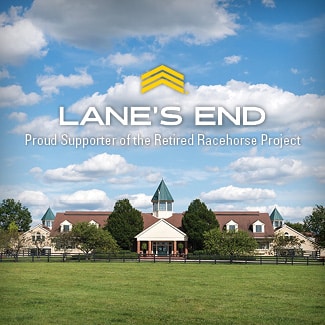Keep your horse comfortable as he transitions off the track
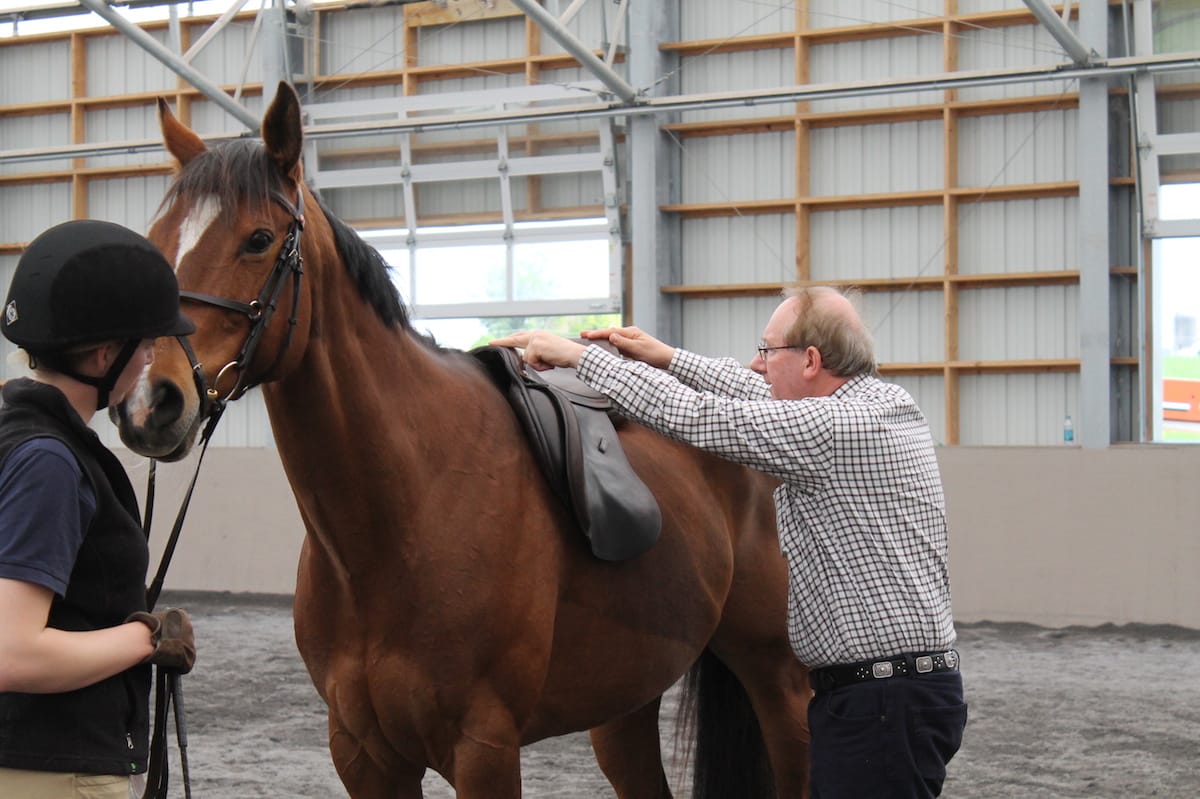
A properly fitting saddle supports the rider and allows the horse to move freely through his shoulder and back. Courtesy Alexandra Beckstett
Long gone are the days of one-size-fits-all and off-the-shelf solutions for English saddle selection. Both approaches were common 20 or more years ago, when Thoroughbreds dominated competitive arenas and filled boarding barns. At the time riders often used one saddle on multiple horses throughout the day and, because of the Thoroughbred’s popularity in the English disciplines, saddle-makers and manufacturers catered to their slender body type.
However, over the past few decades, wider and heavier European Warmbloods grew in popularity, and saddles became wider to accommodate this market segment. The industry also gained a better understanding of equine biomechanics, back pain, lameness diagnostics and saddle technology. Riders became more educated and empathetic about the signs of saddle discomfort.
As an increased number of OTTBs make their way into competitive and recreational homes, it’s important for riders to understand why saddle fit is important, identify signs saddles don’t fit and know the unique challenges associated with fitting Thoroughbreds. Here’s a closer look to help ensure your saddle fits your OTTB.
Why Saddle Fit Is Important
A properly fitting saddle supports the rider and allows the horse to move freely through his shoulder and back. “The saddle is the interface between horse and rider,” says Scott Anderson, DVM, a veterinarian at Woodside Equine Clinic, in Ashland, Virginia, where he focuses on sports medicine and lameness. “If a saddle fits well, it facilitates communication between the two.”
A poorly fitting saddle that’s uncomfortable for the rider and/or horse impedes that communication. For the rider, a saddle that doesn’t fit will cause discomfort and poor position, leading to balance and cueing issues. Fortunately, riders can usually identify their discomfort. The same isn’t necessarily true for horses, which might experience acute and potentially chronic pain from poor saddle fit. That pain can lead to unsoundness.
For Anderson, a poorly fitting saddle is one of the most frequent causes of back pain he sees. “Practicing chiropractic and acupuncture initially led me to palpate for soreness in the neck and back and to motion palpate for identifying reduced ranges of motion,” he says. “To understand the underlying problems, diagnostics such as radiography and ultrasound are helpful to diagnose vertebral disorders. Recognizing when back pain is due to or contributed to by a saddle is extremely important in helping a horse with a sore back.”
Many veterinarians have an interest in saddle fit because of its relationship to soundness. However, in addition to compromising soundness, saddle pain and discomfort can cause a cascade of behavior and training problems, says saddle fitter Stacy Berger of Powell Butte, Oregon.
Berger has more than a decade of saddle fitting experience and training. She initially became interested in the field when she competed in endurance, a sport that requires long hours in the saddle and keeping both horse and rider comfortable. While she currently represents Bliss of London and Custom Saddlery, Berger offers independent saddle fitting for horses in a variety of disciplines and brands.
Early Signs That Something’s Wrong
A rider might first notice subtle issues. The horse might drop his back when the rider places the saddle and show signs of resentment, such as pinning his ears or biting when the girth is tightened. The horse might also drop his back when the rider mounts and, once a rider is on, be reluctant to move forward off the leg, which can progress to ear pinning, kicking out, running off or bucking. Jumping horses might stop at fences.
“The tricky part is that those behaviors can also mean a number of other things, as well,” Berger says. “Some horses may have other issues that are causing pain, such as ulcers, laminitis or hock pain. It’s always a good idea to bring your veterinarian in to determine why a horse isn’t willing to work. If your vet doesn’t find something that is causing the behavior issues, ask a reliable saddle fitter to examine your saddle.”
The saddle fit might need adjustment, either through saddle modification or with pads or blankets that allow for shims. Or, the horse might need a completely different saddle.
However, Berger warns that some horses are stoic and won’t show signs they’re uncomfortable under saddle. “They will do their work and not complain about a poor-fitting saddle,” she says. “They either have a constitution that just deals with it, or they have been taught that their job is to deal with whatever we ask them to do.”
These horses require an astute rider to notice initial signs a saddle doesn’t fit. They can also benefit from regular pre-emptive saddle-fitting appointments to identify issues before they progress. Anderson notes other visual clues riders can look for that indicate a saddle doesn’t fit, such as hair loss, swelling, abrasions, sores and abnormal sweating patterns in areas where the saddle contacts the horse’s back.
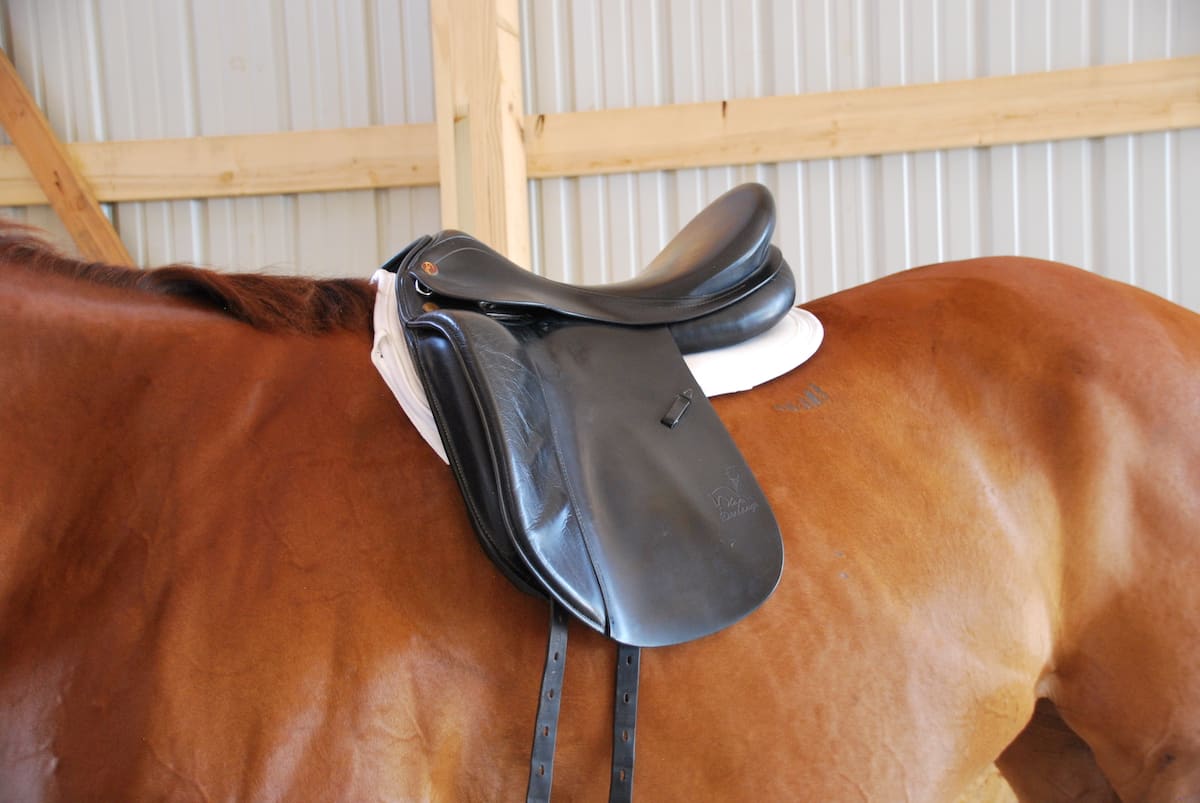
You can make some saddle fit adjustments with padding and shims. Courtesy Alexandra Beckstett
Other Signs a Saddle Does (or Doesn’t) Fit
A purposeful saddle-fitting session can help prevent a horse from experiencing discomfort. When trying a saddle for your Thoroughbred, Berger offers the following advice:
■ Set the saddle on the horse’s back, behind the shoulders, without girthing it. A properly fitting saddle should have billets (the straps the girth attaches to) that point perpendicular to the ground, not forward (saddle too narrow) or backward (saddle too wide). It should also sit level front to back, providing a balanced surface for the rider. “In general, a saddle that is tipped forward either is stuck in the atrophied pockets behind the shoulder or is too wide,” she says. Conversely, “a saddle that’s tipping back, but perhaps clearing the withers with ample space might be too narrow.”
■ Run your hand under the saddle. The panels (which lie on either side of the spine) should make full contact with the horse’s back without gaps. Any spaces permitting light to shine through indicate bridging, which in turn means the saddle will create pressure points. Tight areas could indicate pinching.
■ Standing at your horse’s tail (be careful not to get kicked), look down the gullet channel. The channel (space between the panels) should be wide enough to allow the panels to sit on the muscles on each side of the spine and not the spine itself. The saddle should also clear the spine front to back, including the withers. “Frequently, a saddle that is too wide is also sitting on top of the withers, although if the saddle is contacting the withers it could also be the head plate (a piece that forms the pommel over the withers) in the saddle tree is not appropriate for that particular horse,” Berger says.
Another sign a saddle doesn’t fit well is instability when the horse is in motion, Anderson says. This can be the cantle that bounces off the horse’s back during riderless longeing sessions at the trot or the saddle that rocks forward and back or side to side with a rider. You can also tell if a saddle is moving by looking at the saddle pad after a sweaty riding session: A saddle that moves will also move the pad, which will pull dirt away from the haircoat, leaving the pad dirty where the saddle is moving (think of it as the difference between laying a towel on a horse and rubbing the horse vigorously with one).
Ill-fitting saddles might also list to one side or the other. However, Berger notes that research shows saddles shifting sideways can also indicate other problems, such as hind-limb lameness or rider imbalance.
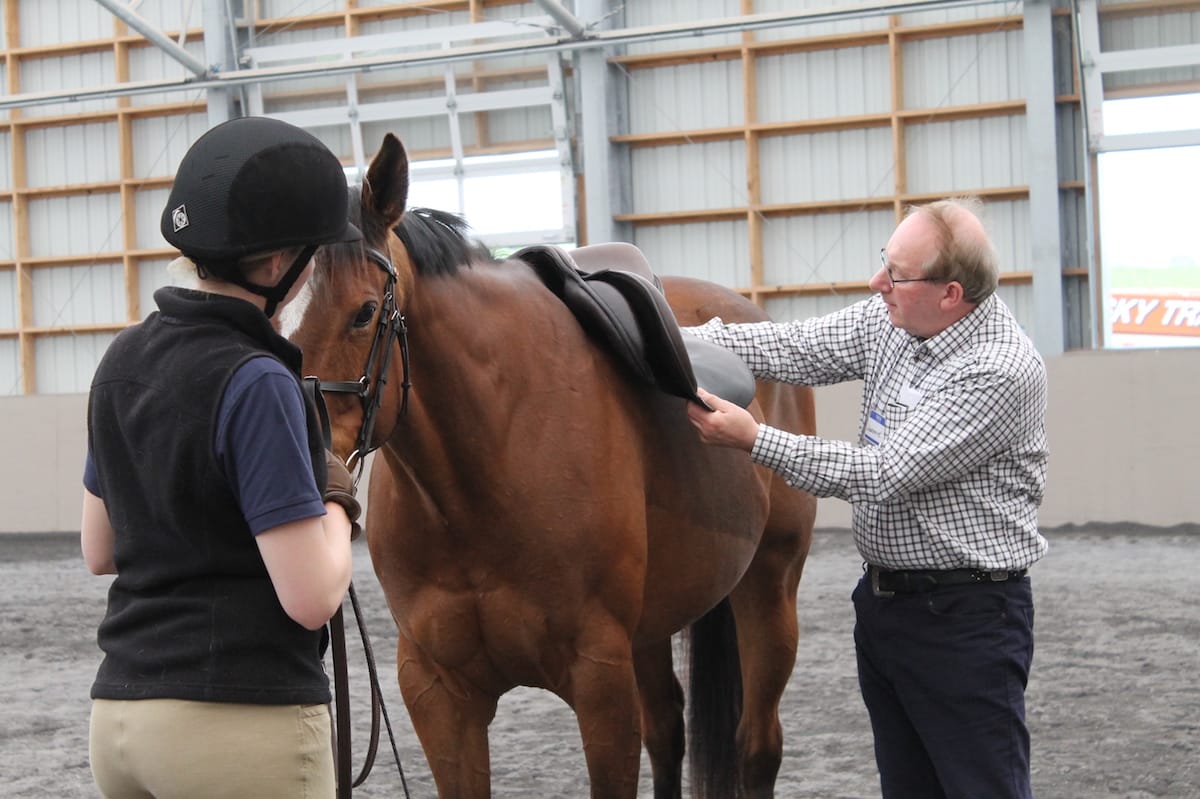
When evaluating saddle fit, run your hand under the panels; they should make full contact with the horse’s back. Courtesy Alexandra Beckstett
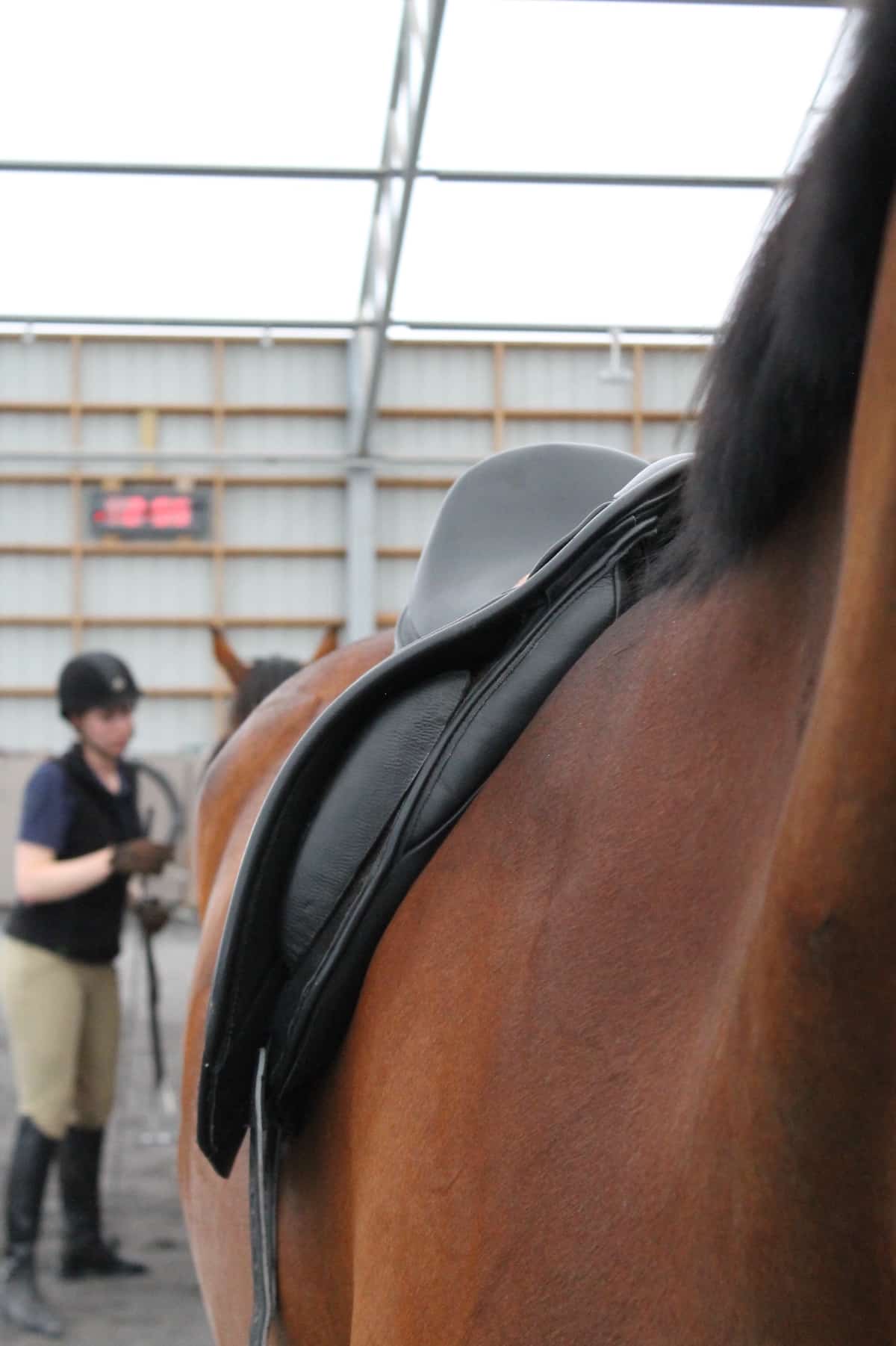
saddle fit, back, conformation, good fit
Special Considerations for OTTBs
Berger and Anderson both caution against making broad generalizations about certain breeds when it comes to saddle fit. Every horse is an individual. Given that fact, Anderson says there are certain similarities many OTTBs share as a population when compared to other breeds, such as Warmbloods or Quarter Horses. These include:
■ Narrow withers. “A narrower wither requires a narrower (saddle) tree,” Anderson says.
■ Prominent withers. “If the wither is prominent then the saddle must accommodate it, otherwise the pommel may apply pressure on the dorsal processes (the tops of the vertebrae) of the wither,” Anderson says. “It can also lead to the saddle being unlevel with the seat being lower.”
■ Narrow backs. As mentioned, many of today’s saddles are built for Warmbloods, which have broader backs than many Thoroughbreds. A wide saddle risks sitting on a prominent wither; but the panels of a too-wide saddle also might not make full contact on the horse’s back. This reduced surface area increases pressure on the areas that do make contact, creating the potential for pressure and pinch points. “If the back musculature is narrower, the panels under the seat must approximate the angle of the back as it drops from the midline,” says Anderson.
■ Sloping backs. “On some Thoroughbreds, even though the point of shoulder and point of hip are level (meaning the horse is not built downhill), many have a back that slopes from their croup down toward their withers,” Berger says. This means a saddle might tip and/or slide forward.
You also need to give special consideration to Thoroughbreds currently or recently transitioning from the racetrack, Anderson says. These horses are often young and will continue to grow after they retire, and they will undoubtedly gain weight as they move from intense race conditioning to a more leisurely lifestyle. And, finally, moving from track training to arena work will change their musculature, especially over the back, as the body adapts from speed and endurance work to bending and collection.
“The saddle you start with may not be the same one you end up using as the horse changes,” Anderson says.
With that in mind, Berger warns against purchasing an inexpensive, ill-fitting saddle with the idea that your OTTB will grow out of it anyway. If a horse is compromising its movement to compensate for poor saddle fit, he won’t develop as he would in a saddle that fits, she says.
“OTTBs will change over time and with work, but they need a saddle that fits correctly all the time,” she says. “Not purchasing a well-fitting saddle because the horse is going to change won’t help the horse change for the better.”
Poor-fitting tack can lead to bigger problems later in life. For example, a pinching saddle can cause muscle atrophy (wasting), especially along the withers. On an already narrow, high-withered horse, lack of muscling can create pockets along the withers, making him that much more difficult to fit, Berger says.
The bodies of older Thoroughbreds and war horses coming off the track will also change with their new training. These horses offer considerable experience and heart required for successful racing careers. However, Berger notes they might also have asymmetries that come from a lifetime of rigorous training or past injuries. “Sometimes this doesn’t impair the ability of the horse, but it does become an element to consider (when fitting saddles),” she says.
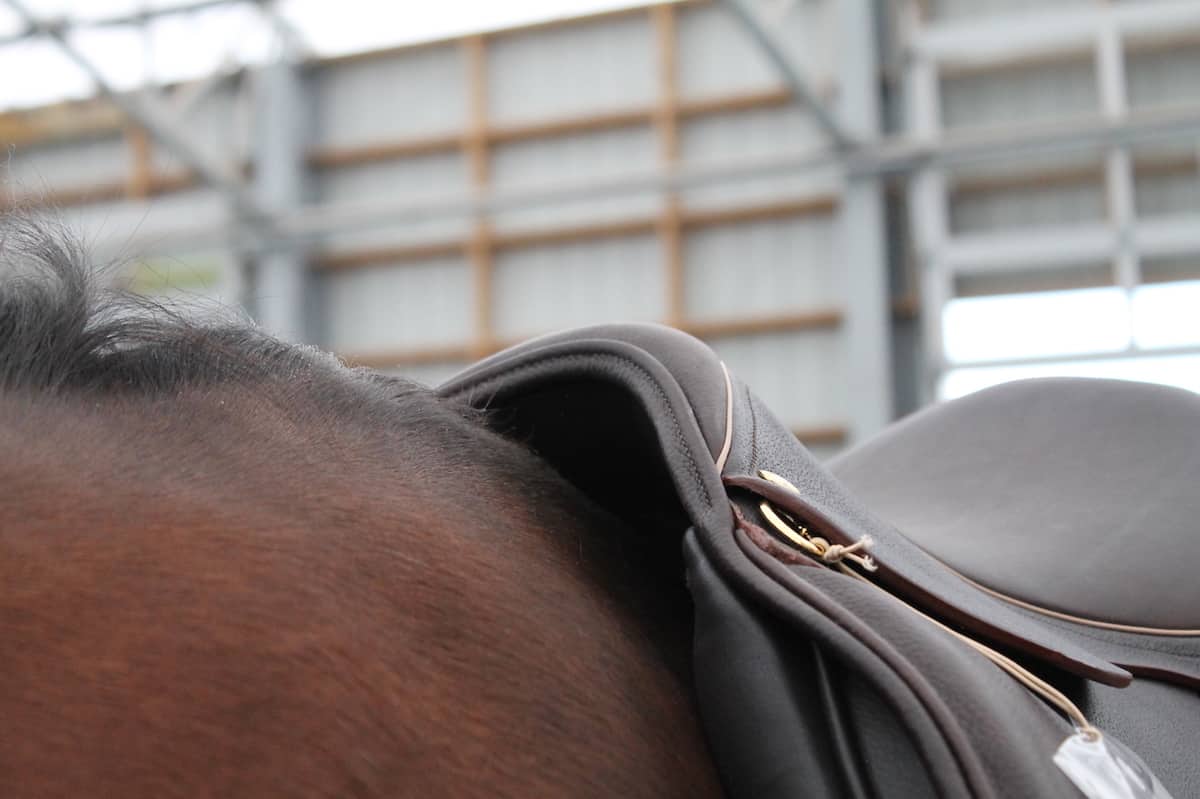
Avoid using a wide saddle tree on your typical narrow-backed, prominent-withered Thoroughbred. Otherwise, you risk it sitting on the withers. Courtesy Alexandra Beckstett
Fit the Individual
Good saddle fit is important to support an OTTB’s soundness, well-being and training. And, while many Thoroughbreds share physical similarities that affect saddle fit, “each saddle needs to be evaluated on each individual horse to see if it’s a match,” Berger says. Proactive saddle fitting can help prevent pain and discomfort, and you can expect to replace or have saddles refitted as your OTTB’s body and topline change with conditioning. When issues do arise, work with your veterinarian and an experienced saddle fitter to evaluate your horse’s comfort and saddle fit. Doing so will ensure the saddle continues to facilitate positive communication between you and your Thoroughbred.
This article was originally published in the Spring 2018 issue of Off-Track Thoroughbred Magazine, the only publication dedicated to the Thoroughbred ex-racehorse in second careers. Want four information-packed issues a year delivered to your door or your favorite digital device? Subscribe now!

